How To Use Natural Light For Dark & Moody Photos
If you love dark & moody style images, you might be surprised to know it’s not about editing (although that’s part of it). But it starts with exposure – low key photography is the first step to a dark & moody style, and in this tutorial we’re showing you how to master it so you can take your own delicious dark and moody images.
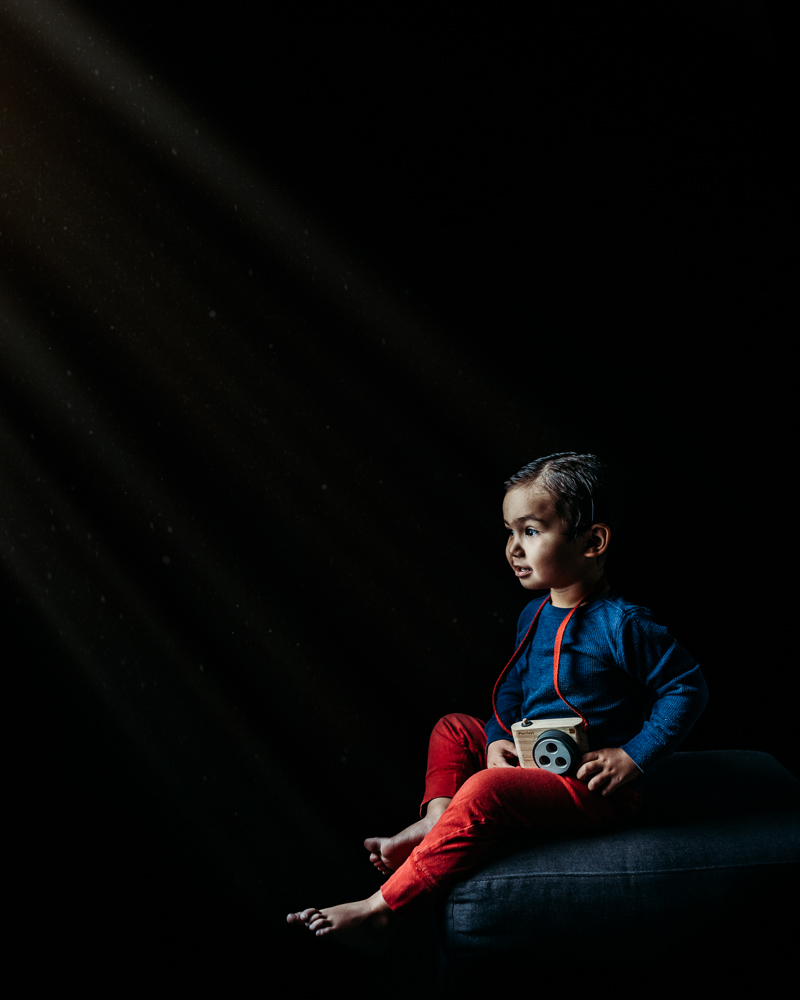
Hope de la Rosa, CLG Advanced Grad
What is Low Key Photography?
When it comes to photo exposure, there’s no one-size-fits-all. You can expose dark, light, and everything in between according to your subject matter and creative vision. You’ve probably heard the concept of dark and moody images. This is a popular term for low key images and is something we teach in-depth in our Advanced Photography Course.
So what does low key mean exactly?
It’s a photo that contains more dark tones and colours than any other, and typically the light is not as bright as a “light and airy” type of image. Which, by the way, is otherwise known as a high key image, and yes, we also teach that style!
When done well, a low key image can be beautifully dramatic, moody and mysterious! And the best bit? If you’ve got a severe lack of light — whether it’s because you live in a cave or you’re enduring a dark winter — you only need a tiny low light pocket to try this photography style!
Read on and learn some easy ways to use natural light for stunning dark and moody pics!
1. Side Lit Low Key Portraits
These stunning portraits were created using a combination of dark colours, low light, and a position near a window with soft gentle light filtering through.
By positioning them at a 90-degree angle to the light source, the shadows on the left are maintained, which adds depth and conveys a quiet moment.
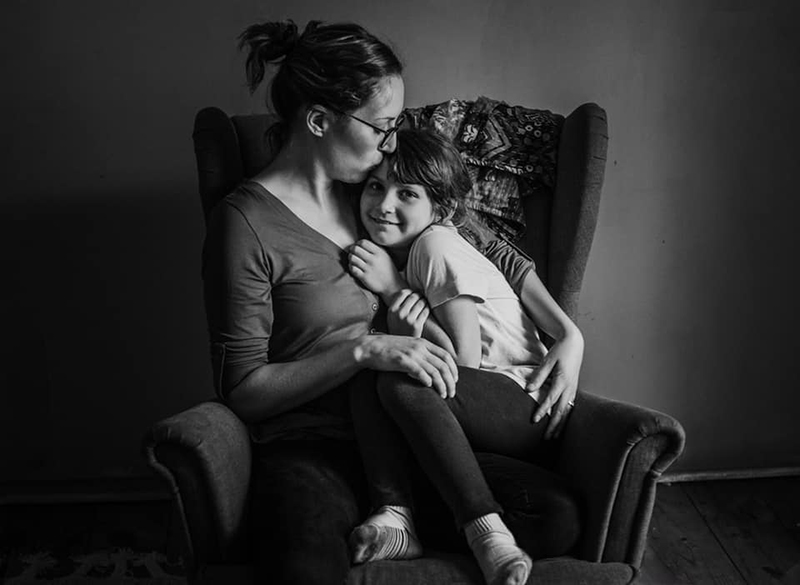
Chantel Harding, Advanced Grad
In this one, the photographer is at a 90 degree angle to the light source, but her subject is facing the light which creates some beautiful sculpting and leverages the shadows on the right.
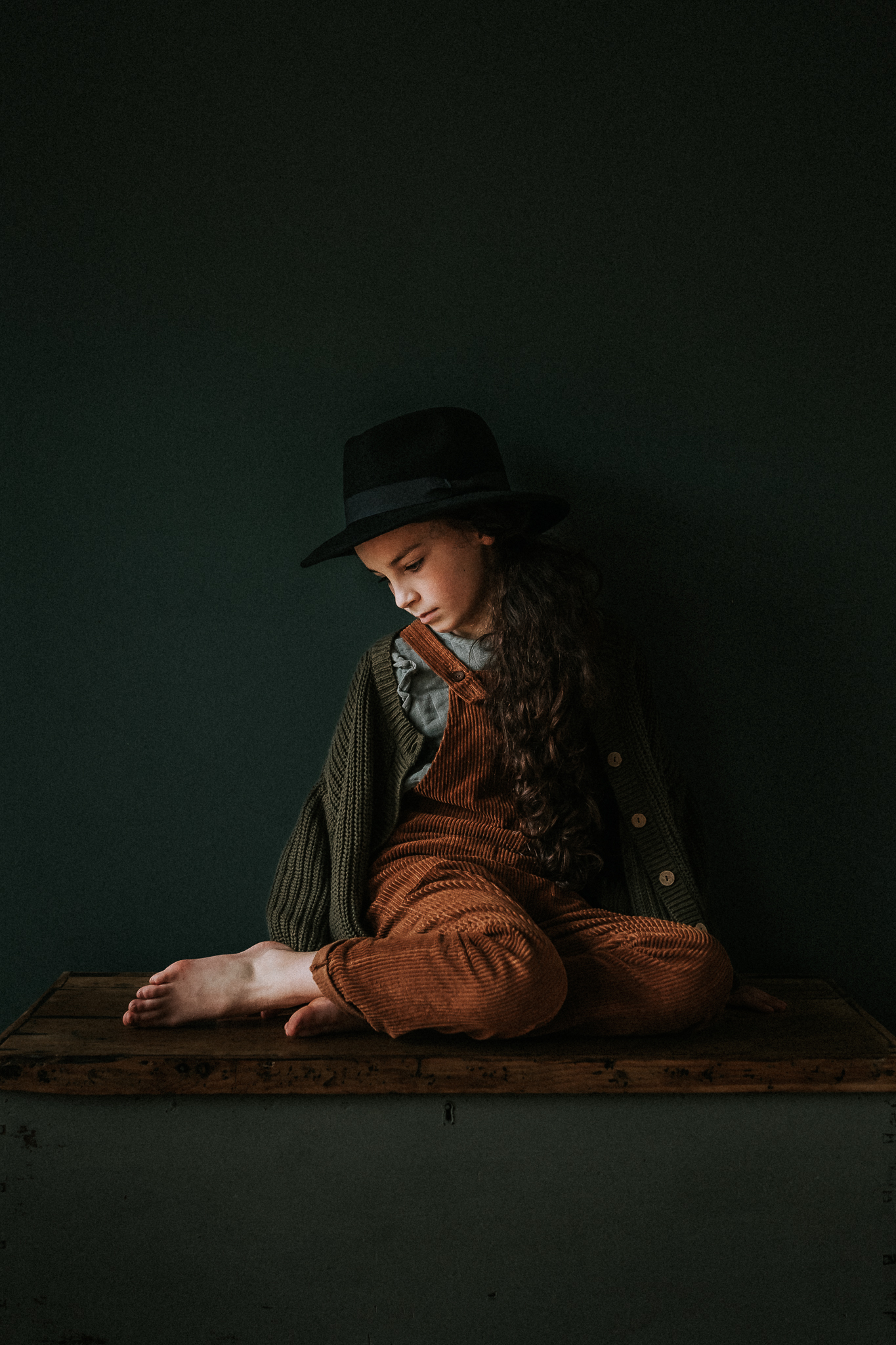
Morvern Shaw, Advanced Grad
This dark and moody photo uses the light in the same wasy as the one above. Stunning!
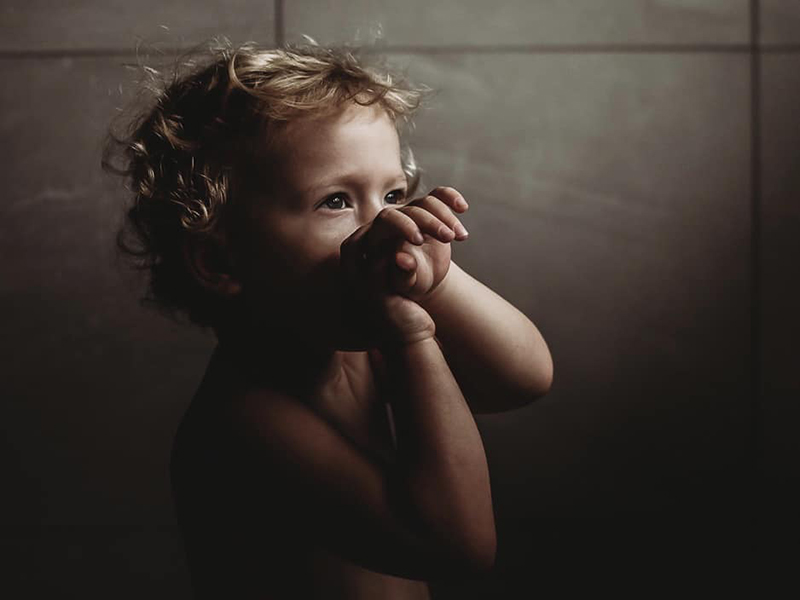
Kirsty McKenzie, Advanced Grad
Even if you don’t have dark walls like this image below, the room is too light and bright, and shadows on the opposite are non-existent, close off all other light sources and position your subject next to one small light source. Look at those beautiful shadows on the right! They sculp her face to highlight those beautiful baby curves and that pout!
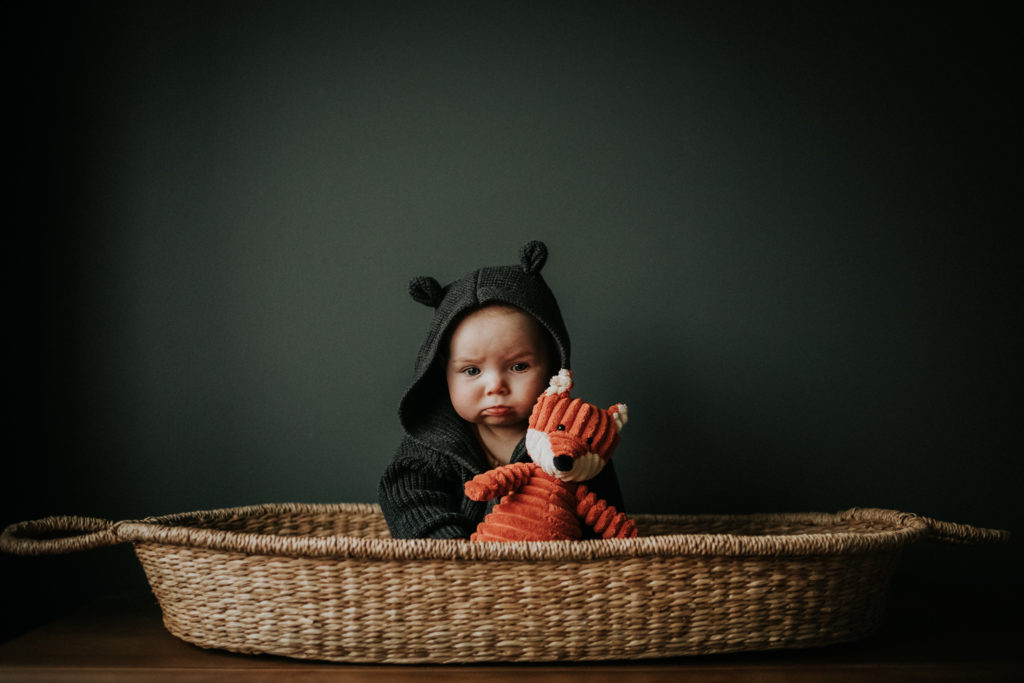
Morvern Shaw, Advanced Grad
Below, the subjects are positioned at a 45-degree angle to the light source, and all other light sources in the room are blocked off. Whilst you can see some detail in the shadows behind them, it’s muted and not at all distracting, and it’s still a low key photo because the overall tones are mostly dark.
This enables the subjects to really separate from the environment. And what a beautifully delicious, emotive image to be cherished!
Related: Dramatic Natural Light Portraits
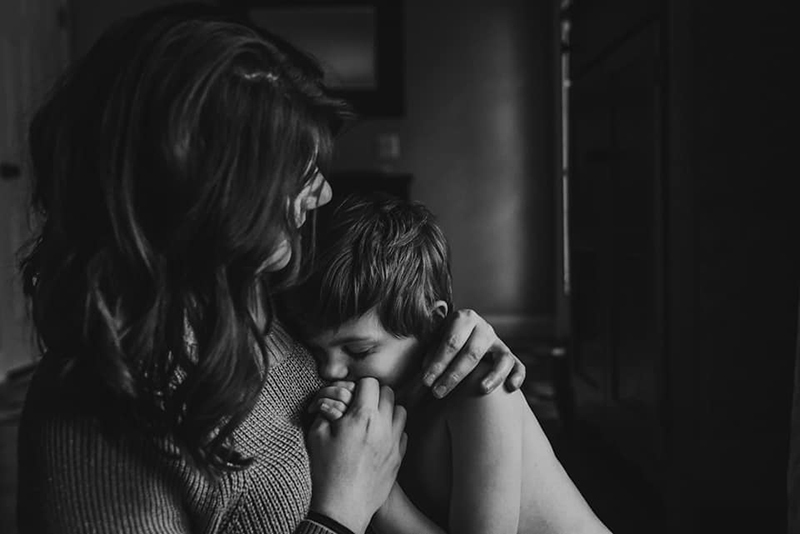
Dana Whitley, Advanced Grad
2. DIY Low Key
Dark and moody style isn’t just about low key light. You also need some low key tones – so dark, muted colours that sit to the left of centre on a histogram. So if you’ve got dark walls in your house, you can use them to easily create a dark and moody look.
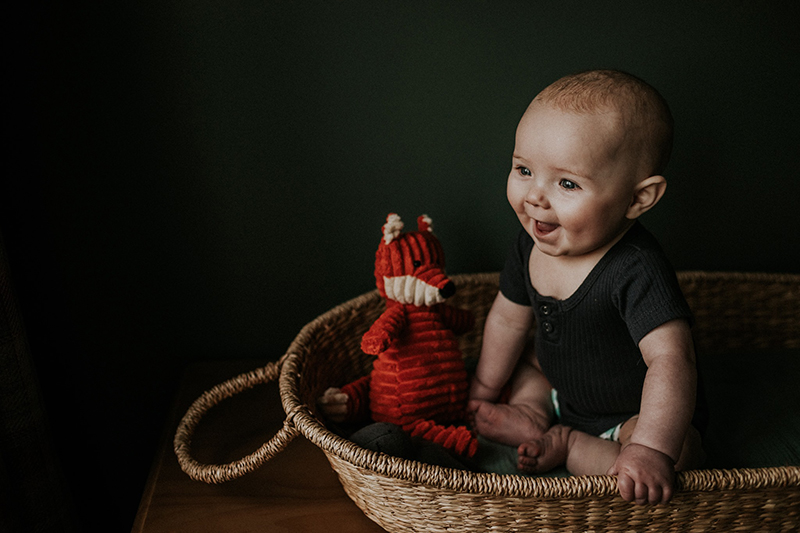
Morvern Shaw, Advanced Grad
Buy what do you do if your house is light and bright with white walls all around? This image below was shot near windows, in soft mid-tone to high key light. But Sue created a dark and moody result simply by adding a black backdrop. Notice she’s exposed for the brightest part of her subject’s skin, and the backdrop falls away to shadow.
Related: Low Light Photography Tips
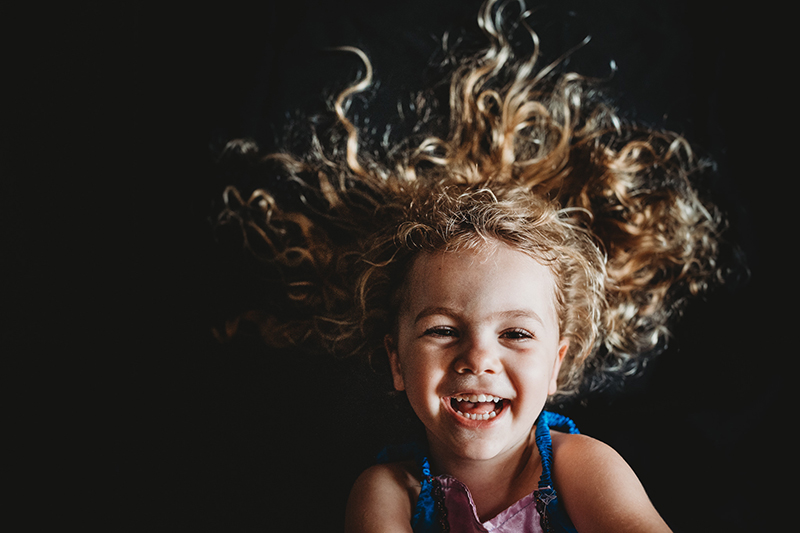
Sue Thorn, Advanced Grad
3. Sun Silhouettes
Expose for the light or the colours in the sky at dawn or dusk to create a beautifully dark and moody silhouette photo. You can expose so your subjects appear fully in silhouette or partially to capture some detail and emotion.
The settings? You can do this using an aperture of around f/2.2, shutter speed around 1/250 and an ISO to balance — start with 320 and tweak if required. Bear in mind your settings will depend on the ambient light you have at the time, so there’s no one-size-fits-all exposure setting.
Related: Sunset Silhouette Photos
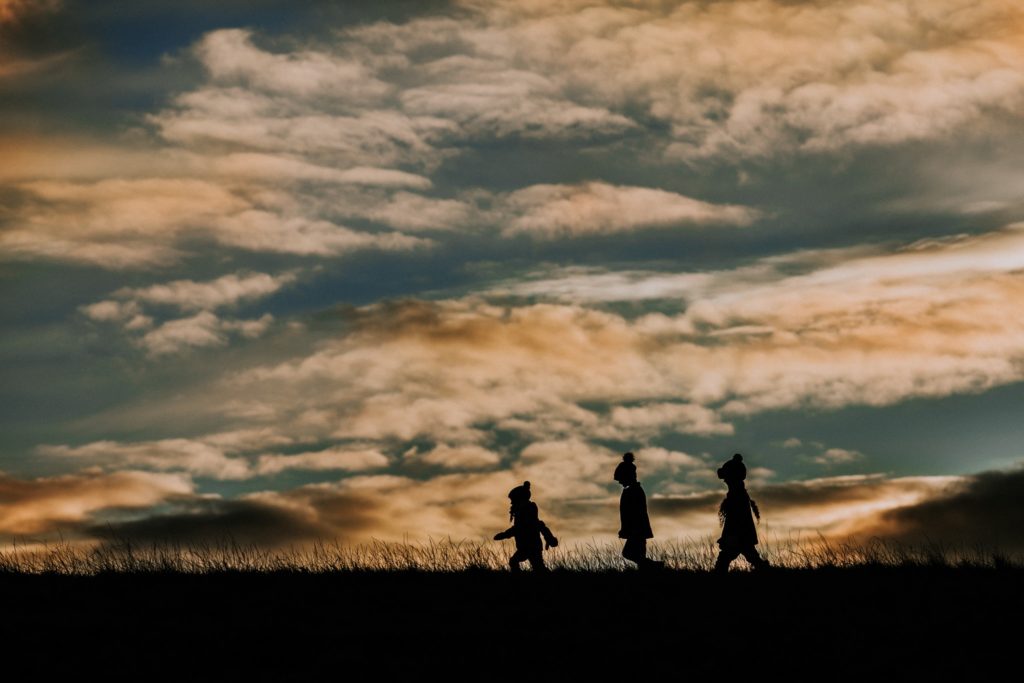
Morvern Shaw, Advanced Grad
4. Shadow Photography
In this late in the day sunlight, look for well defined hard light shadows to create unexpected low light imagery. The subject doesn’t have to be a person either. Any shadow, if well defined and interesting, can be a subject within itself if you pay attention to the surroundings and your composition.
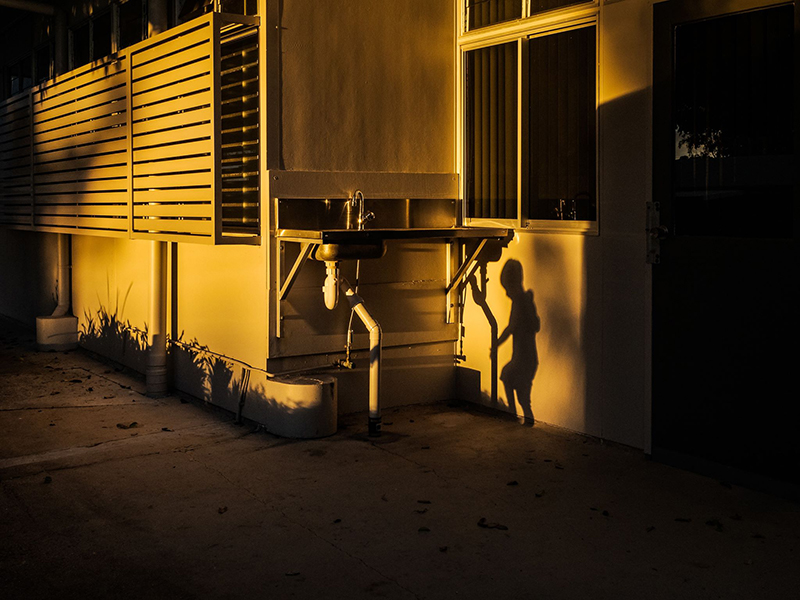
Alice Mariette, Advanced Grad
Patterns made by the shadows also make a surprising and creative image.
Related: Shadow Photography Tutorial
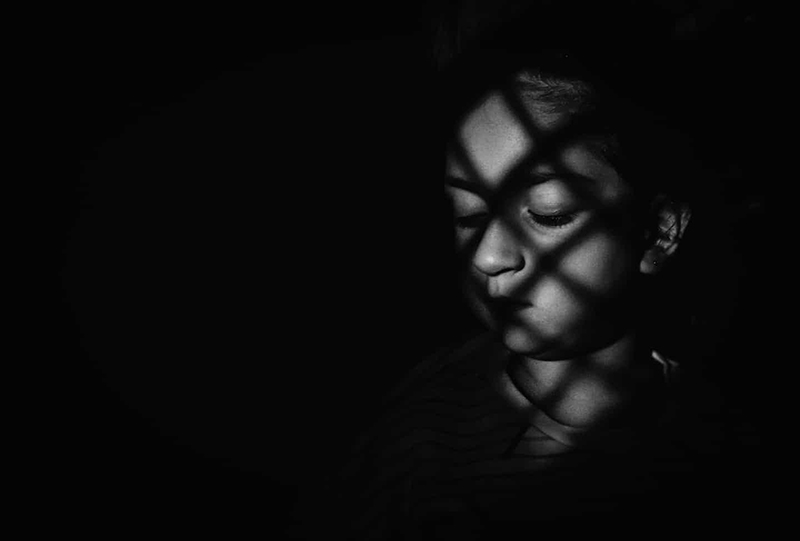
Sonia Ragusa, Advanced Grad
5. Food Photography
Food photography in a dark and moody style just screams rich and delicious! Use dark backgrounds and position your food near a window with soft light.
Related: Lifestyle Food Photography Guide
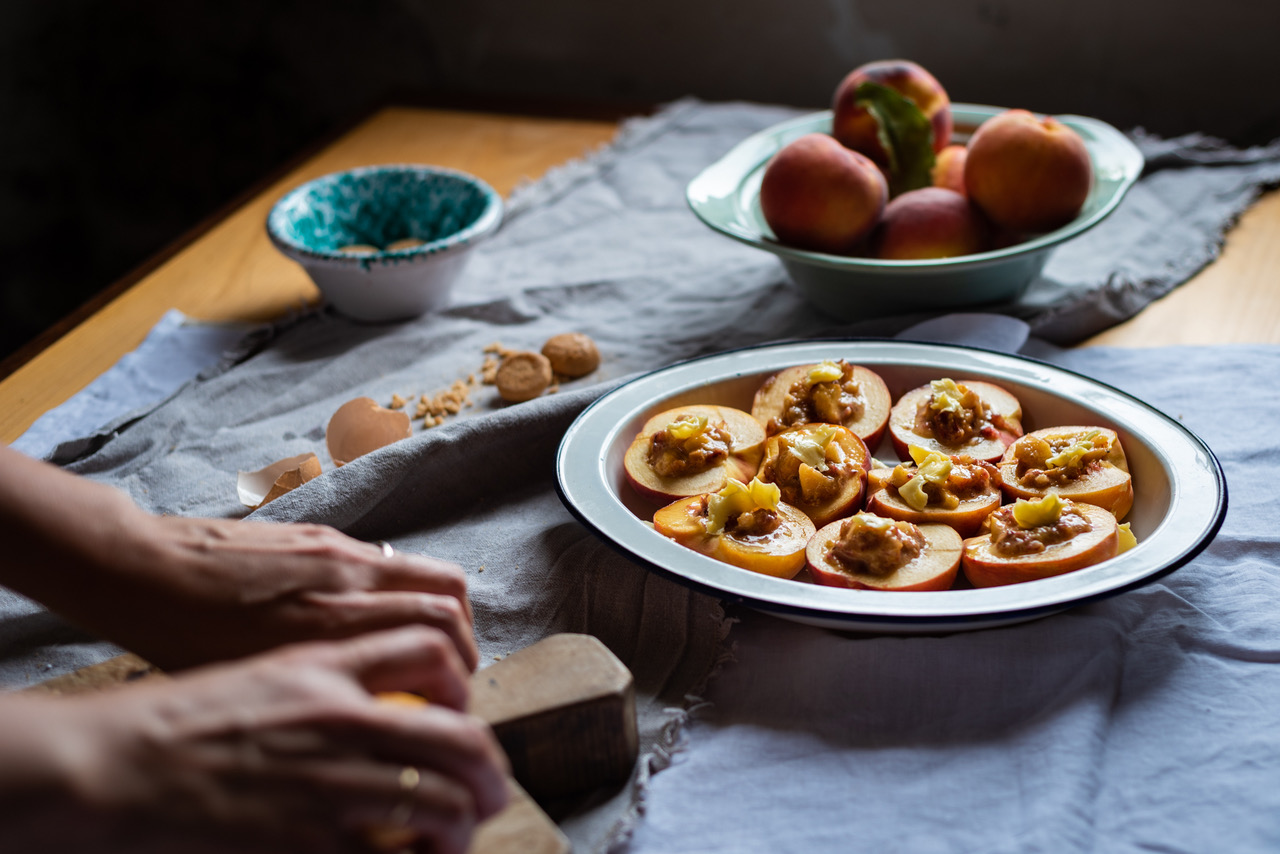
Sally Frawley, CLG Advanced Grad
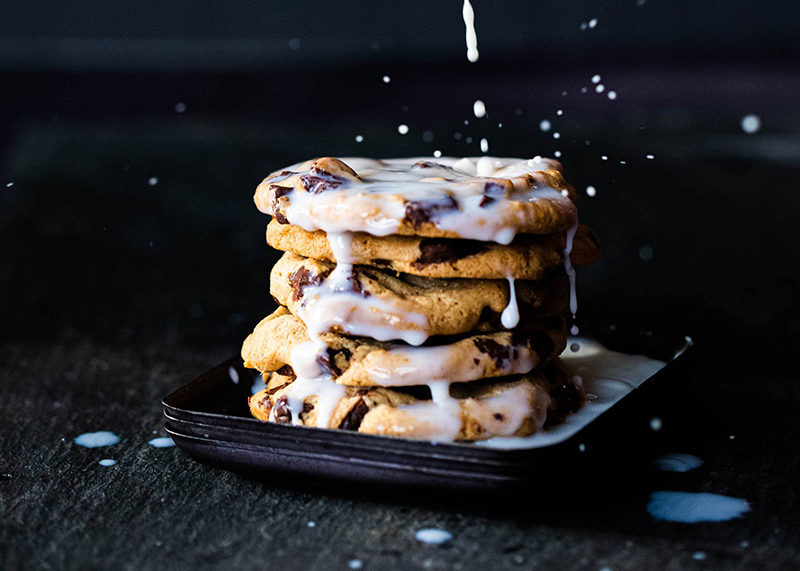
Pam Hart, Advanced Grad
You don’t need a fancy set up either… worn out baking trays make a fantastic mottled backdrop. And food being such a small subject, you can also just use a piece of black project paper stuck to a wall.
Related: How to Take Magazine Worthy Food Photos

Naomi Sherman, Advanced Grad
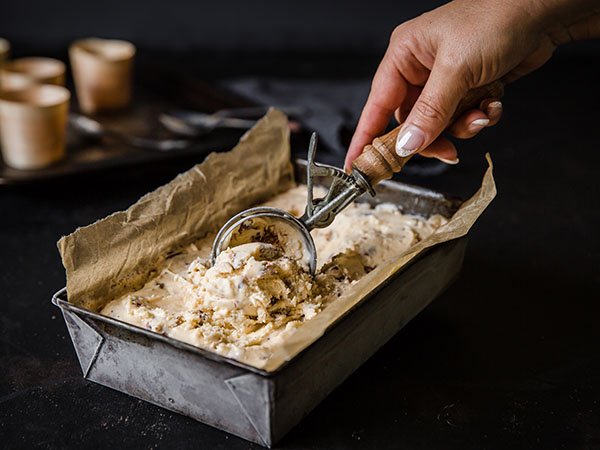
Naomi Sherman, Advanced Grad
6. B&W Dark & Moody
We love this dramatic portrait by Morvern Shaw. It’s easy to create a dark and moody look by editing in black & white to mute colour and tone and draw the eye to subtle highlights.
Related:Capture Mood Using Tone in B&W Portraits
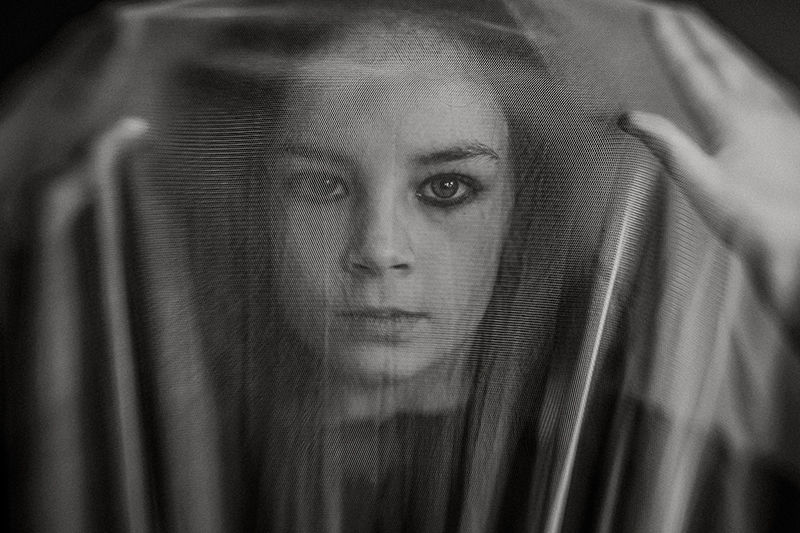
Morvern Shaw, Advanced Grad
Ready For the Next Steps in Your Photography?
If you’re shooting in manual mode, our Advanced Photography Course is the next step. You will learn to shoot with confidence in any scenario, and push yourself creatively to develop your style through intensive 1:1 critique on your work.
Click HERE to find out more and join the waitlist for our next round coming soon!
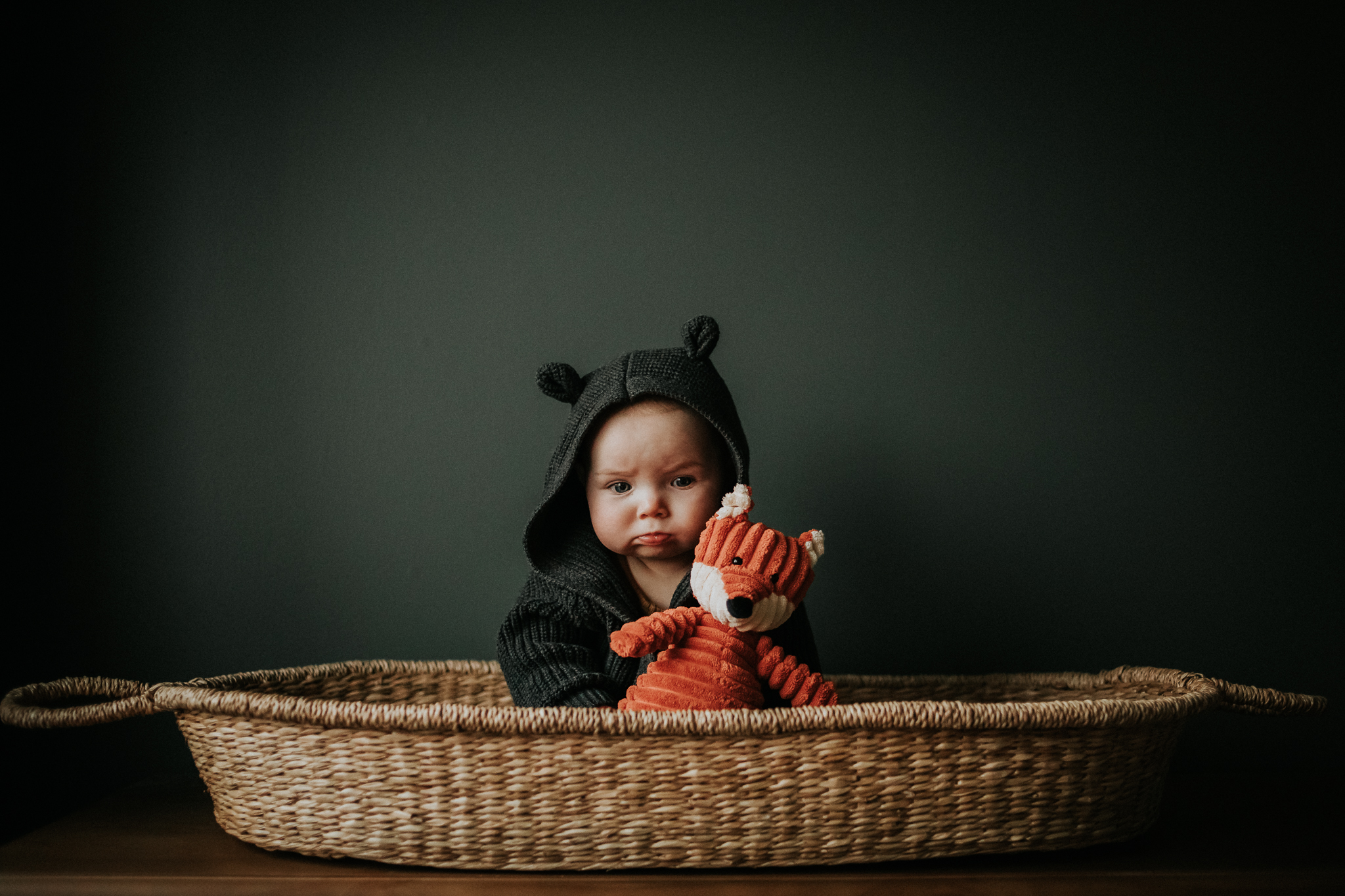
Leave a Reply Cancel reply
PRIVACY POLICY & SITE TERMS AND CONDITONS
CLICK LOVE GROW ™ Pty Ltd - COPYRIGHT 2024 ©
x
Join Now
Enter your info below to join the challenge!
Want a friendly reminder when I go live?
Pop in your number and I’ll shoot you a text.
* We will send text reminders for our live calls during the challenge! Reply ‘STOP’ to end or ‘HELP’ for help.
We promise not to ever share your details with anyone or send you spam! Check our privacy policy and terms of service.
Be the first to comment